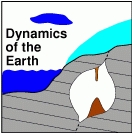- Kaufmann, G., Romanov, D., Jahn, G., Galindo Guerreros, J.
- and Nielbock, R. :
Geophysical explorations of cave sites:- The case of the Unicorn Cave, Scharzfeld/Harz, Germany
Braunschweiger Naturkundliche Schriften, 11, pp69-80, 2012.

| 74. |
| Geophysical explorations of cave sites: The case of the Unicorn Cave, Scharzfeld/Harz, Germany |
| Georg Kaufmann1, Douchko Romanov1, Grit Jahn1, Julio Galindo Guerreros1, Ralf Nielbock2 |
| 1Institute
of Geological Sciences, Free University Berlin, 12249 Berlin,
Germany 2Gesellschaft Unicornu fossile eV, Im Strange 12, 37520 Osterode am Harz, Germany |
| Braunschweiger Naturkundliche Schriften, 11, pp69-80, 2012. |
|
Shallow caves and karst structures in soluble rocks can be detected from the surface with a variety of geophysical methods. Gravity reveals cavities through the negative Bouguer-anomalies associated with the air- or sediment-filled voids. Electrical resistivity tomography reflects the different infill of cavities, either high resistivities from air-filled voids or dry soft sediments, or low resistivities from saturated sediments. Georadar measurements reveal structural information from the boundaries between cave and rock, and from layered sediment filling the passages. We have surveyed the Unicorn Cave located in dolomite with a combination of gravimetry and electrical resistivity tomography to detect the signal of the underlying karst objects. We successfully located the cave with both geophysical methods. Additional information on the structure of the cave could then be revealed by simple three-dimensional forward modelling of the Unicorn Cave with the new three-dimensional program tool PREDICTOR, which is able to simulate geophysical signatures of the sub-surface voids below a realistic surface located in an aquifer. Results from a first version of this tool will be presented. |